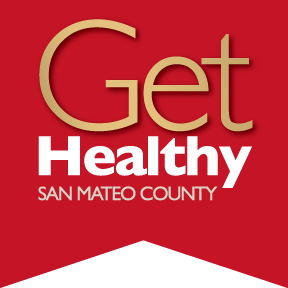Let’s talk data for more telling messages
Dear Get Healthy Partners,
I am excited to share my love of data with you. As an Epidemiologist for the Health Policy and Planning (HPP) team, my job is to explore, compile, analyze, and present data related to housing, neighborhood, school, and economic issues to support HPP’s work to build healthy, equitable communities in San Mateo County. Today, I want to demonstrate how you and anyone you know can (and often should) use data to help communicate issues important to you.
Data is a powerful tool. Not only can it help you better understand an issue, but it can also help you explain why you care about the issues you do – and why others should too. Numbers can make a big impact. So raising awareness about or describing the importance of an issue can almost always be improved by including evidence to support your claims. For example, here are some data points HPP shares to help convey why our work matters:
- Nearly half of all county residents who rent and more than 80% of low-income renters are burdened with housing that is unaffordable.
- About 40% of collisions in San Mateo County are happening within a quarter mile of schools.
- Two-thirds of 3rd graders from low-income families in San Mateo County are not meeting reading proficiency standards.
- $74,000 is the required income to meet basic needs in San Mateo County, and the median income for American Indians/Alaska Natives, Blacks, and Latinos is much lower.
Perhaps you’re already aware that data can help your cause but do not know where to begin. Or you may think using data is intimidating and feel overwhelmed by the notion of having to run complex analyses or present beautiful data visualizations.
Data isn’t meant to be used by only a select few. You don’t need to be a researcher or have a PhD to take advantage of what data can offer you or your organization. Start by thinking about the message you want to convey and how data can support that. Then look into data sources that already have what you need.
There are plenty of great (and free!) data sources for everyone that allow you to search by topic and geography. Some even let you specify how you want the data analyzed and visualized so you don’t have to worry about running analyses or creating graphics. Check out the following data query tools where you can easily mine for and explore ways to utilize data to help create a healthy, equitable San Mateo County:
- American FactFinder: one of the most comprehensive population data hubs out there – you’ll find demographic and socioeconomic data that can be specified by your geography of choice (zip codes, census tracts, cities, counties, states, etc.) and also download the data in many different file formats.
- Community Commons: another comprehensive data source that includes data related to economy, education, environment, equity, food, and health; specify your geography of interest and view data by table, chart, or map.
- California Health Interview Survey: a major California health data source with a very user-friendly query system, known as AskCHIS, that allows you to select your data by multiple topics and geography and create tables or charts; don’t forget to explore the AskCHIS Neighborhood Edition to map your community level data.
- Vital Signs: specific to the San Francisco Bay Area, this data source includes transportation, housing, economy, and environment indicators that highlight performance at the regional, county and city level; view graphs and maps or download data to perform your own analyses.
- Kidsdata.org: great for individuals and groups interested in data related to youth or education; this data source covers demographics, health, education, and socioeconomic issues and allows you to download data as well.
We are excited to release our own data hub that identifies indicators to measure health and equity in San Mateo County place-based perspective. An expansive (and still growing) list of indicators has been created, and we have compiled, analyzed, and visualized much of this demographic, health, housing, neighborhood, school, and economic data. Check it out, and happy data mining! If you have any questions or comments, feel free to get in touch with me. I look forward to connecting with you.

